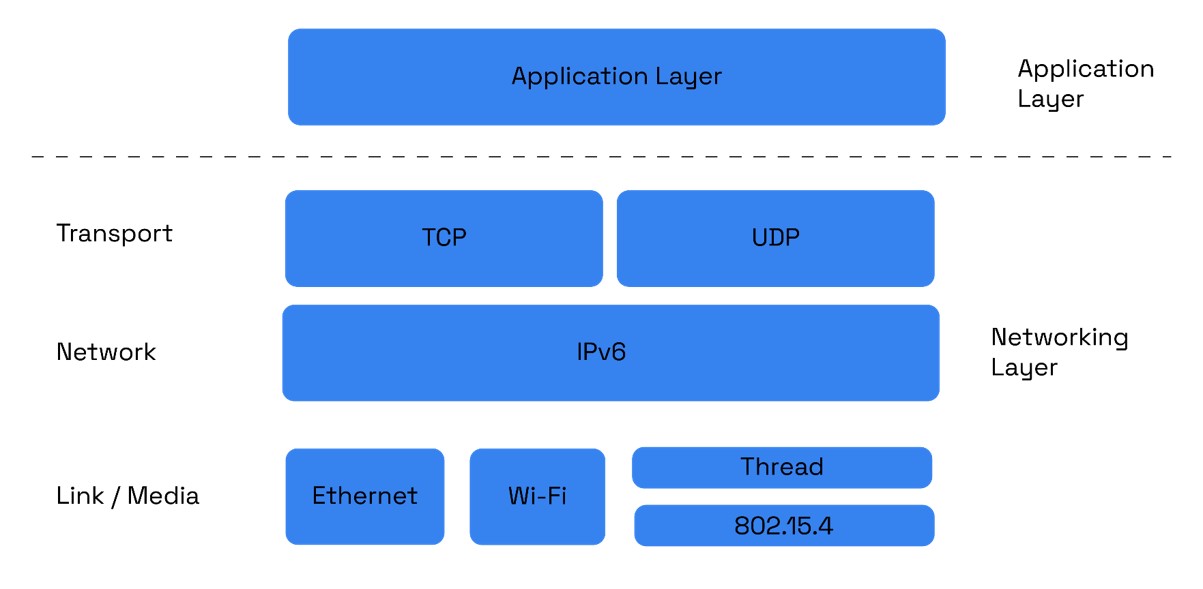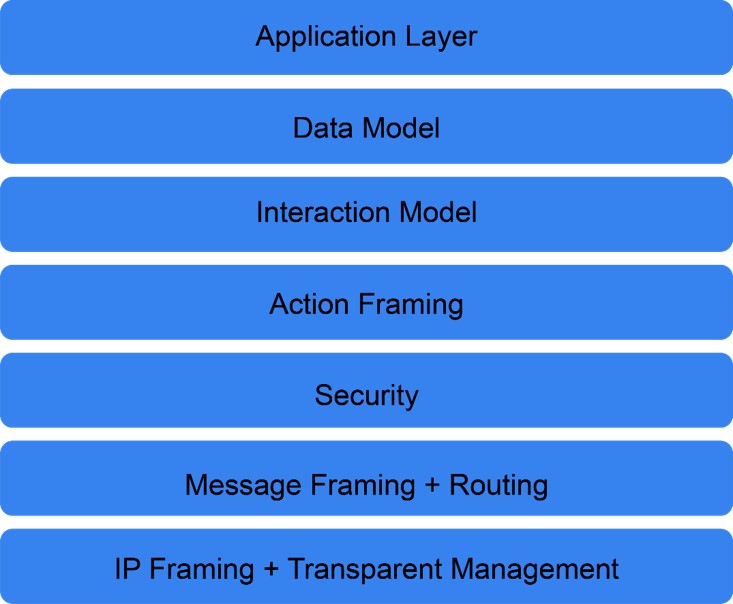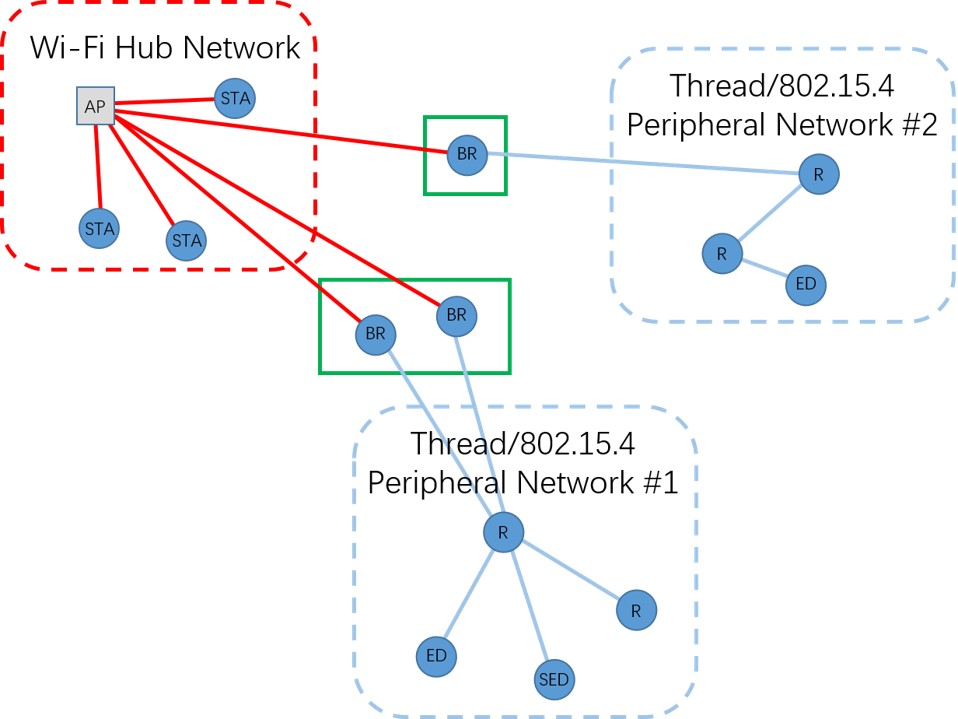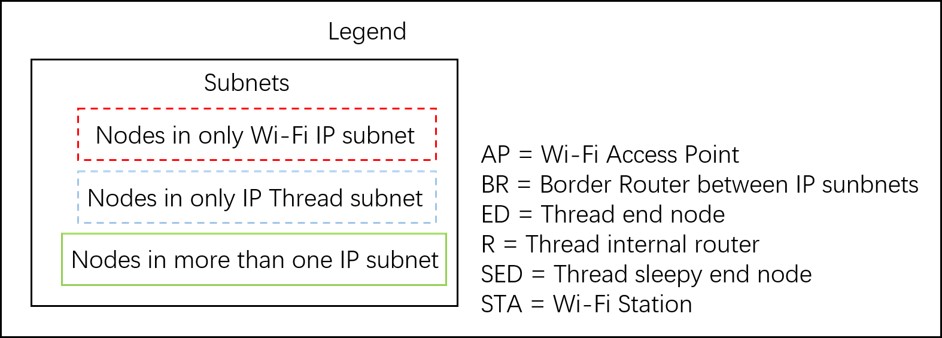Overview
Matter(formerly Project CHIP) is a unified, open-source application-layer connectivity standard built to enable developers and device manufacturers to connect and build reliable and secure ecosystems and increase compatibility among connected home devices. It is built with market-proven technologies using Internet Protocol(IP) and is compatible with Thread and Wi-Fi network transports.
This section provides an overview of the architecture, data model and network topology of the Matter protocol.
Matter Architecture
Matter aims to build a universal IPv6-based communication protocol for smart home devices. The protocol defines the application layer that will be deployed on devices and the different link layers to help maintain interoperability. The following diagram illustrates the normal operational mode of the stack.

Matter Architecture Overview
The architecture is divided into layers to help separate the different responsibilities and introduce a good level of encapsulation among the various pieces of the protocol stack. The vast majority of interactions flow through the stack captured in the following figure.

Matter Layered Architecture
Application Layer: High-order business logic of a device. For example, an application that is focused on lighting might contain logic to handle turning on/off the bulb as well as its color characteristics.
Data Model: The data layer corresponds to the data and verb elements that help support the functionality of the application. The Application operates on these data structures when there is an intent to interact with the device.
Interaction Model: The Interaction Model layer defines a set of interactions that can be performed between a client and server device. For example, reading or writing attributes on a server device would correspond to application behavior on the device. These interactions operate on the elements defined at the data model layer.
Action Framing: Once an action is constructed using the Interaction Model, it is serialized into a prescribed packed binary format to encode for network transmission.
Security: An encoded action frame is then sent down to the Security Layer to encrypt and sign the payload to ensure that data is secured and authenticated by both sender and receiver of a packet.
Message Framing & Routing: With an interaction encrypted and signed, the Message Layer constructs the payload format with required and optional header fields; which specify the message’s properties and some routing information.
IP Framing & Transport Management: After the final payload has been constructed, it is sent to the underlying transport protocol for IP management of the data.
Matter Data Model

Data Model
The Data Model layer corresponds to the data and verb elements that help support the functionality of the application. The Application operates on these data structures when there is intent to interact with the device. The elements of the data model include Fabric, Node, Endpoint, Cluster and so on.
A Fabric is set of Nodes that interact by accessing data model elements as defined in the Interaction Model. A Fabric is a security domain that allows a set of Nodes to be identified and communicate within the context of the domain.
A Node encapsulates an addressable, unique resource on the network that has a set of functions and capabilities that a user recognizes distinctly as a functional whole. This distinction is usually physical, such as the physical device itself, or a logical instance of a physical device. A Node is the highest or outermost first order element in the data model and it is also the outermost unique addressable element of the data model.
A Node is composed of one or more Endpoints. An Endpoint is an instance of something that could be a service or virtual device as indicated by a device type. Each Endpoint conforms to one or more device type definitions that define the Clusters supported on the Endpoint. Clusters are object classes that are instantiated on an Endpoint.
Each Cluster is defined by a Cluster specification that defines elements of a Cluster including attributes, events, commands, as well as behavior associated with interactions with these elements.
Matter Network Topology
Matter network can be composed of Ethernet, Wi-Fi, and Thread devices.
Single Network
In the single network topology, all Matter devices are connected to a single logical network. This could be a Thread/802.15.4 network, a Wi-Fi network or an Ethernet network. In the case of Wi-Fi/Ethernet, the network could in fact span multiple Wi-Fi and/or Ethernet segments provided that all the segments are bridged at the link layer.
Each Node in the single-network topology communicates with every other Node in the Fabric via a single network interface.
Star Network Topology

Star Network

Legend
The star network topology consists of multiple peripheral networks joined together by a central hub network. The hub network will typically be the customer’s home network(Wi-Fi/Ethernet network), while the peripheral networks can be of any supported network type. A peripheral network must always be joined directly to the hub network via one or more Border Routers.
Architecturally, any number of peripheral networks may be present in a single Fabric, including multiple networks of the same type. Nodes may have interfaces onto any network(hub or peripheral), and may communicate directly to other Nodes on the same network. However, any communication that must cross a network boundary to reach its destination must flow through a Border Router.
To support home automation interoperability, Matter supports the concept of bridging which makes available, through a data model Node, devices implementing other home automation technologies, transports and link layers.